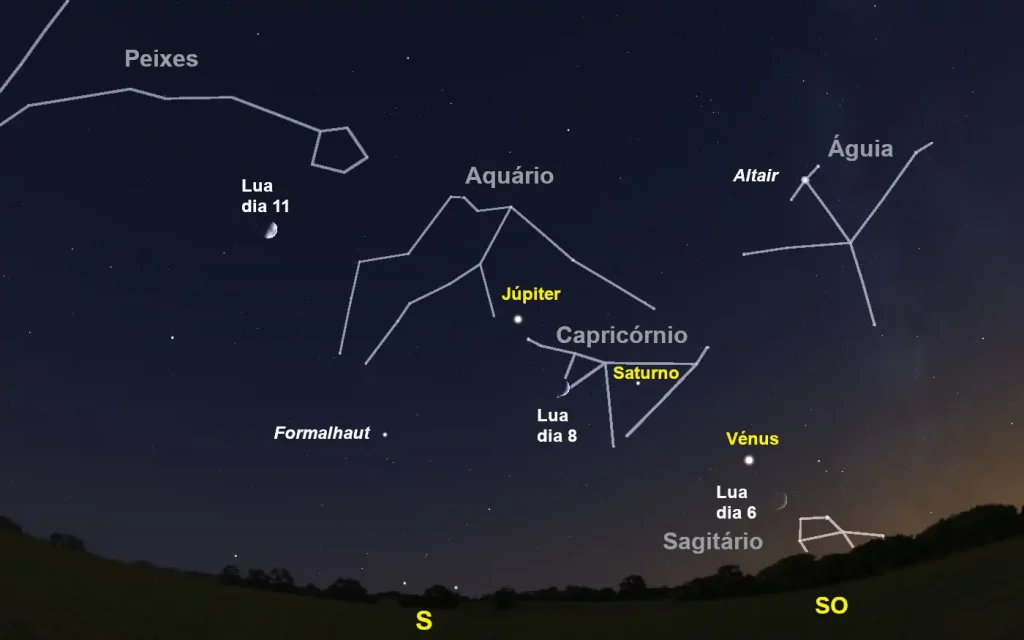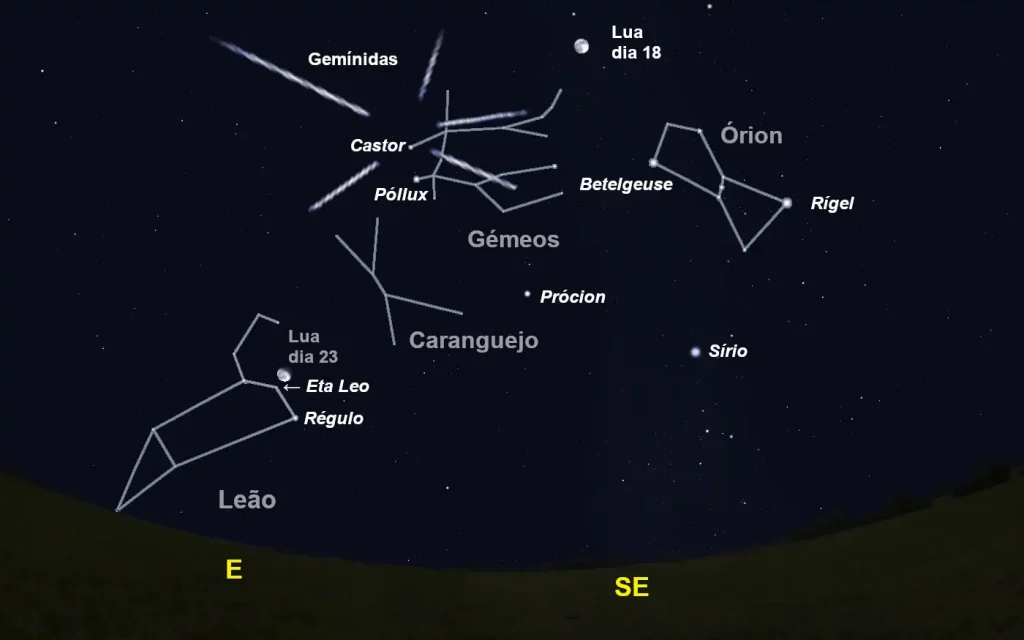The first significant ephemeris of this month will occur at the break of dawn on the 3rd, when we will witness the birth of the Moon just below the planet Mars. This event will be repeated on the last day of this year.
But, while the first time it will occur next to the Libra constellation, four weeks later, we will find these stars next to Antares, the heart of the Scorpio constellation.
The first Saturday of the month will coincide with the New Moon, the passage of the Moon through its perigee (plane of orbit around the Earth) and through the plane of Earth's orbit. Such a combination of coincidences will result in a total solar eclipse, which will only be visible in its fullest range along Antarctica and partially in the southernmost extremes of the African and Australian continents.
Between the beginning of the night of the 6th and 9th, we will notice how the Moon will move across the sky, passing alongside the planets Venus, Saturn and Jupiter.

As for Mercury, it is not until the middle of the month that it will begin to be far enough away from the Sun, as if to allow its observation. Little by little, Mercury will move to the east, passing by Venus on the 29th.
Well before that, the Moon will reach the waning quarter phase at the beginning of dawn on the 11th.
Three days after this ephemeris, the peak of activity of the Geminid shower will take place. These meteors are associated with the asteroid 3200 Phaeton, an object that might once have been a comet.
In other years, up to a hundred and a half meteors were observed per hour. But in 2021, the peak of Geminid activity occurs within a few days of the Full Moon, so a substantially smaller number is to be expected.

With regard to the Full Moon, this will be on the 19th, that is, the day after the Moon has reached the point of its orbit farthest from Earth (the apogee).
By 16 hours on the 21st, the Earth reaches the point in its orbit where the Earth's north pole has the greatest angular distance from the Sun. In our hemisphere, we call this instant the Winter Solstice, falling on the shortest day of the year and where the sun is lower in the sky, thus signaling the beginning of winter.
At dawn on the 20th, the Moon will pass in front of the star Eta of the constellation Leo (Eta Leo). On the mainland, this lunar occultation will begin shortly after 4 am, and around 3 and a half hours (local time) in the Azores, lasting about an hour and a half.
Finally, the last quarter of this year will coincide with last Monday.
His fields of expertise include Astrophysics, Geomagnetism and Space Meteorology.
In addition to his work as a researcher, he has already worked on the governing bodies of the Portuguese Society of Astronomy and coordinated the Solar System Science group at CITEUC.
He is also a regular contributor to scientific dissemination activities.





















Comments